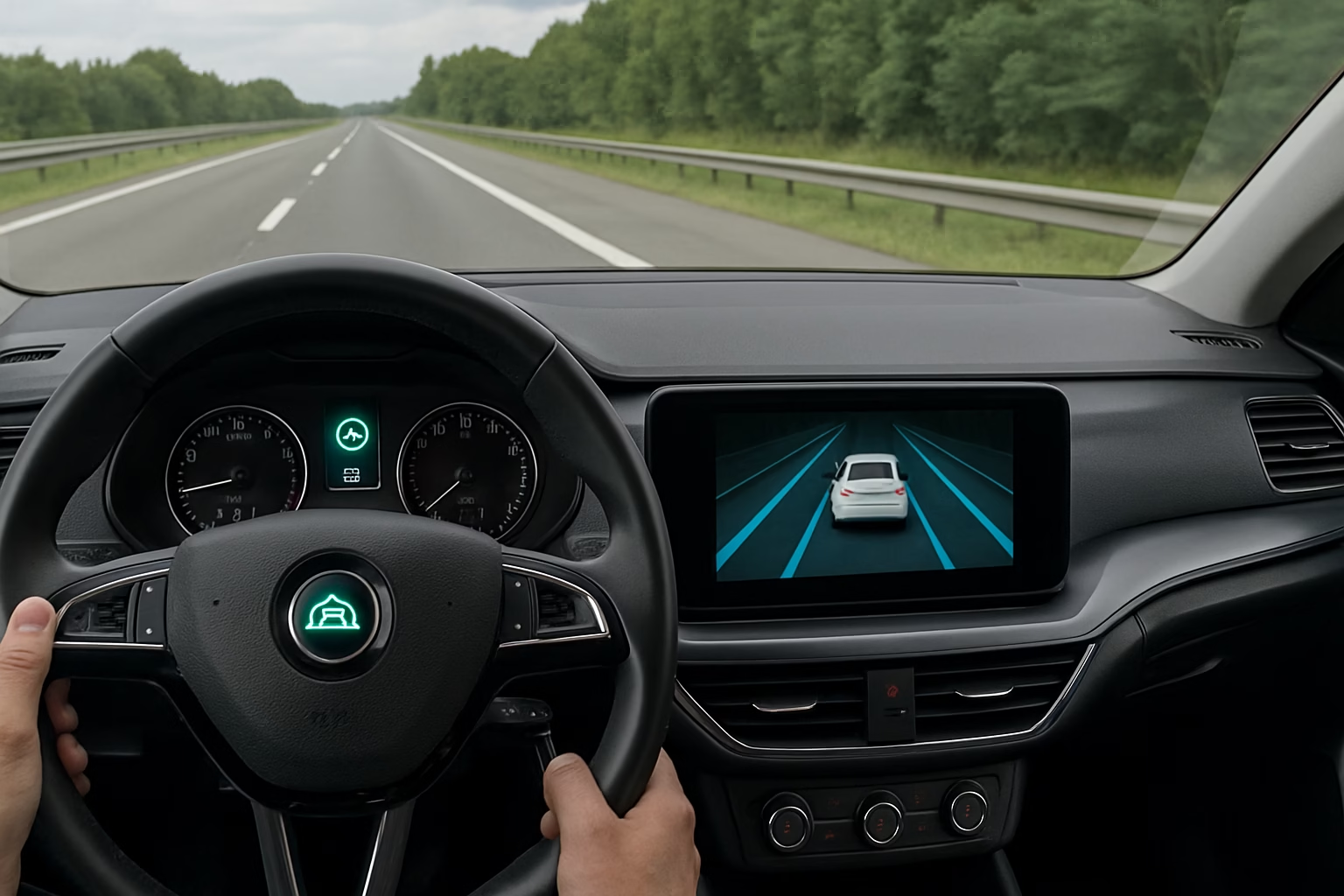Lane Following Assist (LFA) is one of the more advanced driver-assistance features beginning to appear in mainstream vehicles. It builds on familiar lane-departure warnings and lane-keeping systems by actively helping you stay centred in your lane. Instead of simply pinging when you drift toward the line, LFA uses a forward-facing camera to track lane markings and makes gentle steering adjustments to keep the car in the middle. This reduces fatigue on longer trips and can make driving more relaxing, but it’s still important to understand how the technology works and what its limits are.
How lane following works
Most LFA systems rely on a camera mounted behind the windscreen that watches for painted lane lines. The camera feeds data to a control unit that determines where the vehicle sits between the lines. When the car begins to drift, the system applies tiny steering corrections using the electric power-assisted steering motor to guide the vehicle back toward the centre. It works only when your hands are on the wheel and the road has clear, consistent markings. In some vehicles, LFA combines with adaptive cruise control and a front radar to maintain a safe following distance from the vehicle ahead.
Although it can steer, LFA doesn’t mean your car is suddenly autonomous. The U.S. National Highway Traffic Safety Administration notes that driver assistance technologies either warn of an impending crash or take action to avoid it, and they are there to assist rather than replace the driver . Lane following is an example of that assistance: it reduces workload but still requires you to steer and pay attention.
LFA versus lane departure warning and lane keeping
Drivers sometimes confuse LFA with other lane-support features. A basic lane departure warning simply alerts you with a chime or vibration when you cross a lane marking without using your indicator. Lane keeping assist adds a bit of steering input when it senses you drifting, nudging you back toward the lane. LFA, sometimes called lane centring or lane tracing, goes a step further by actively keeping the vehicle centred between the lines whenever certain conditions are met. It functions continuously rather than just correcting after a drift, but it still disengages if you remove your hands from the wheel or if the system can’t see the lines.
When and where to use LFA
Lane following works best on highways and multi-lane roads where the lane lines are clearly painted and the road curvature isn’t extreme. On long motorway drives, it can reduce the micro-corrections you make, helping you stay fresh. Some systems only activate above a certain speed (often around 60 km/h), so they aren’t designed for city streets. Avoid using LFA on unsealed roads, in roadworks with confusing markings or where the shoulders are gravel. On tight, twisty roads the steering inputs can feel unnatural; in those conditions it’s better to rely on your own steering.
Poor weather also affects performance. Heavy rain, fog or bright sunlight can obscure the lane lines the camera needs to see, and snow or dirt on the road may hide them altogether. Dirty windscreens, bugs, ice or condensation in front of the camera lens can also degrade performance. If the system can’t detect lines, it will warn you and deactivate.
Limitations and cautions
LFA isn’t a substitute for hands-free driving. It requires you to keep your hands on the wheel and to steer when the system disengages. Many cars monitor torque on the steering wheel and will beep or flash messages if you take your hands away. Because LFA steers based on painted markings, it can be confused by construction zones, merge points, faded lines or intersections where the lines disappear. The system may gently tug the wheel in a direction you don’t expect. Remain ready to override it at any moment.
Electronic assists also need proper calibration. A windscreen replacement or front-end repair can shift the camera’s position, and suspension or wheel alignment changes can alter how the vehicle tracks. If the system begins to behave erratically after service, have a qualified technician recalibrate it. Keep the camera area clean by gently wiping the glass and avoid aftermarket dash mounts or stickers that might block its view.
Tips for using lane following assist
Before activating LFA, familiarise yourself with the button or menu options in your vehicle and read the owner’s manual to understand the conditions under which it operates. Practise in a quiet area so you can feel how the steering inputs work. Our guide on how to safely test ADAS features explains how to practise new driver-assistance systems without putting yourself or others at risk. Always use your indicators when changing lanes so the system knows your intention, and don’t fight the steering corrections—they should be subtle and easy to override. Keep your eyes on the road and be ready to take full control immediately if necessary.
Conclusion
Lane Following Assist can make highway driving smoother and less tiring by keeping your vehicle centred between the lines. It builds on lane-keeping and adaptive cruise control technologies, but it doesn’t turn your car into an autonomous vehicle. Like all driver-assistance systems, it has limits and relies on clear road markings, a clean camera and correct calibration. By understanding how LFA works and using it only in appropriate conditions, you can enjoy the benefits of reduced fatigue while staying fully engaged behind the wheel. If you’re curious about other advanced features, check out our article on the top mistakes drivers make with ADAS to learn more about using these technologies wisely.

Hiran Alwis is an automotive lecturer and ADAS specialist with over 15 years of experience in diagnostics, advanced safety systems, and technical training. He founded ADAS Project to help everyday drivers and workshop technicians understand and safely use advanced driver assistance systems.
